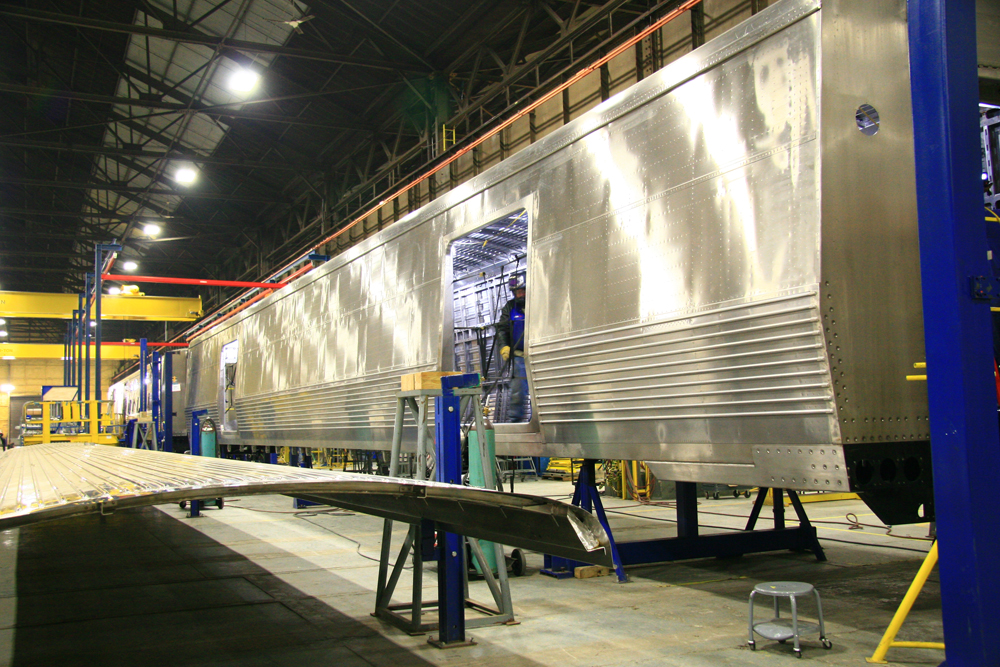
WASHINGTON — Replacement of Amtrak’s long-distance passenger cars has been included in forward-looking fleet plans for more than a decade, but the company announced Thursday it contacted carbuilders in December as “a first formal step” to re-equip the 14 overnight routes of the long-distance network.
The request for expressions of interest “was sent to potential suppliers defining and describing the scope of Amtrak’s overnight train fleet — including Superliner I and II, Viewliner I and II and Amfleet II railcars,” the company said in a press release.
Assuming manufacturers are willing to embark on the project, Amtrak says it expects to release a formal Request for Proposals later this year.
Builders of earlier cars have shut down
The carbuilding landscape is far different today than it was when Amtrak began taking delivery of its Amfleet and Superliner passenger cars from Budd and Pullman-Standard in the late 1970s. Those U.S. firms had shifted primarily to transit and commuter equipment after railroads stopped asking for intercity railcars in the early 1960s.
They did have the benefit of prototypes as a jumping off point for new designs. For Budd’s Amfleet, it was the Pennsylvania Railroad’s federally subsidized Metroliner fleet. Pullman’s Superliner design, crafted with the help of Amtrak’s in-house engineering department, could look for inspiration to the hi-level coaches and lounge cars Budd built for Santa Fe.
One Viewliner diner and two sleeping car prototypes were conceived by Amtrak engineers and designers in 1987 and created at Amtrak’s Beech Grove shops from shells built by Budd. But it took another eight years for 50 Viewliner sleepers to begin rolling off Morrison-Knudsen’s Hornell, N.Y., production line, because Budd and Pullman-Standard had been driven out of their primary business, transit vehicles, by low-bidding foreign manufacturers subsidized by their governments.
Major issues with recent orders
Except for Siemens’ Brightline fleet, recent intercity passenger car acquisitions have been a procurement disaster. Nippon Sharyo had the low bid on a 2012 request for federally funded Midwest and California bilevel cars; after five years of lax oversight, the states realized the Japanese manufacturer lacked the expertise to build them. Siemens was tapped to convert the order to single-level cars, but those are still largely sidelined due to production and quality-control issues. It took CAF USA, a Spanish company that set up shop in the U.S., more than a decade to deliver 130 sleepers, diners, and baggage cars to Amtrak. And the carrier’s New Acela trainsets being built by Alstom are running at least two years behind the original schedule.
The cars Amtrak seeks, complicated by sleeping compartments and extensive plumbing, are far more complex. There has been a resurgence of new sleeping car equipment in Europe, but those new high-capacity overnight entries don’t travel long distances as Amtrak trains do.
One bright spot has been the oversize GoldLeaf dome cars built for Rocky Mountaineer’s Canadian operation by Stadler in Europe. Make no mistake: these are specialty cars that may not lend themselves to mass production. But at least they provide a possible entry into the long-distance replacement sweepstakes.
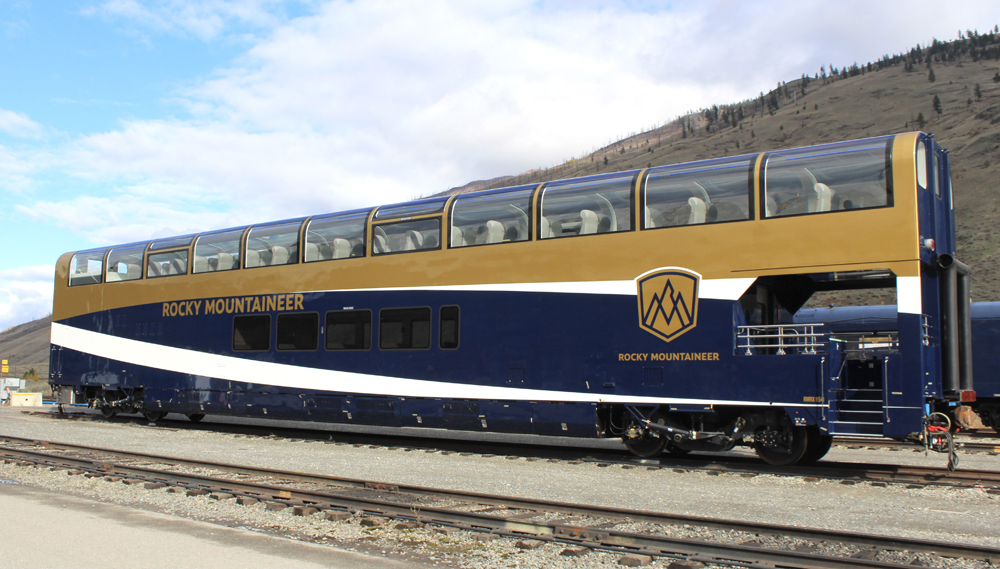






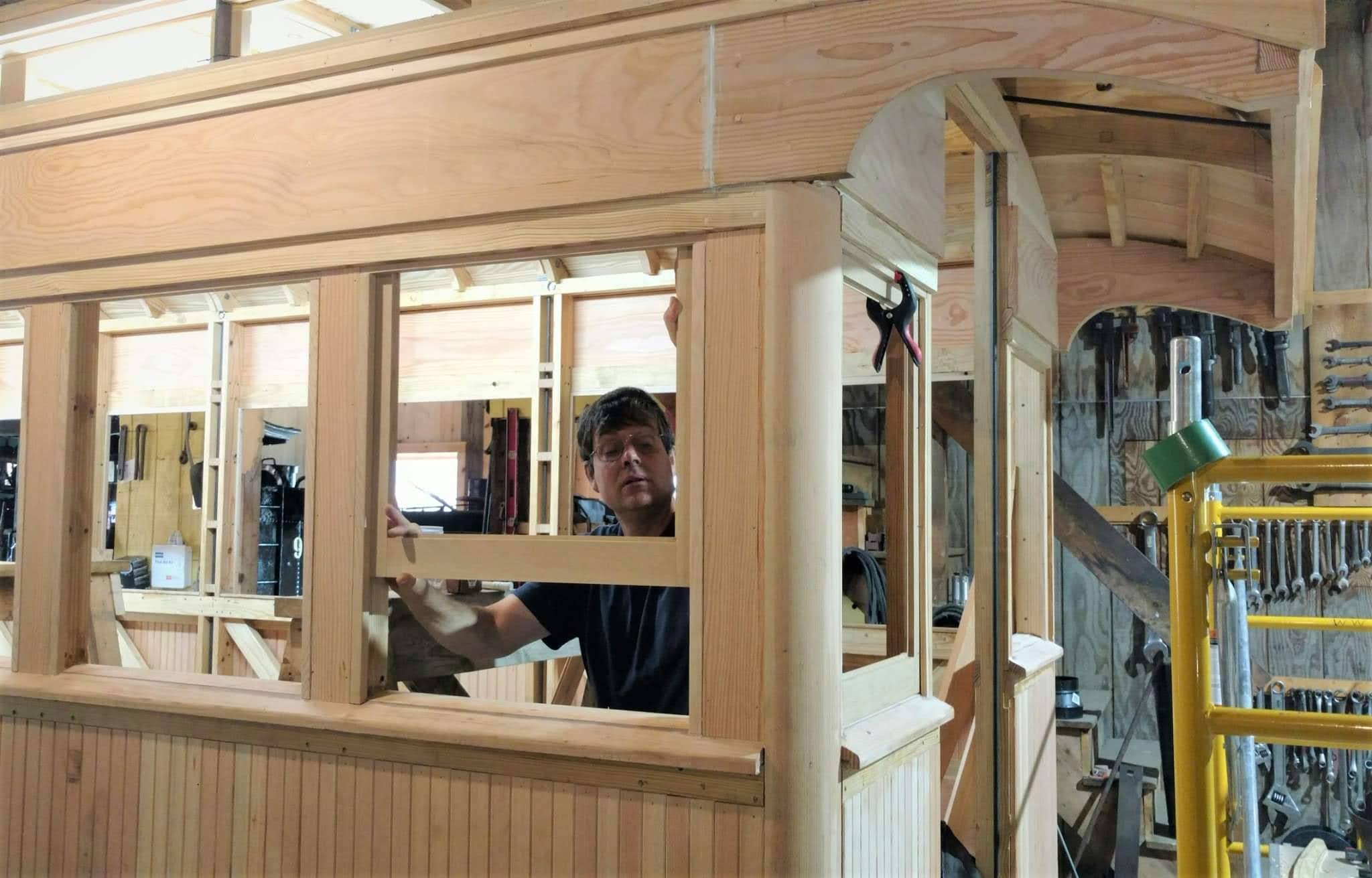
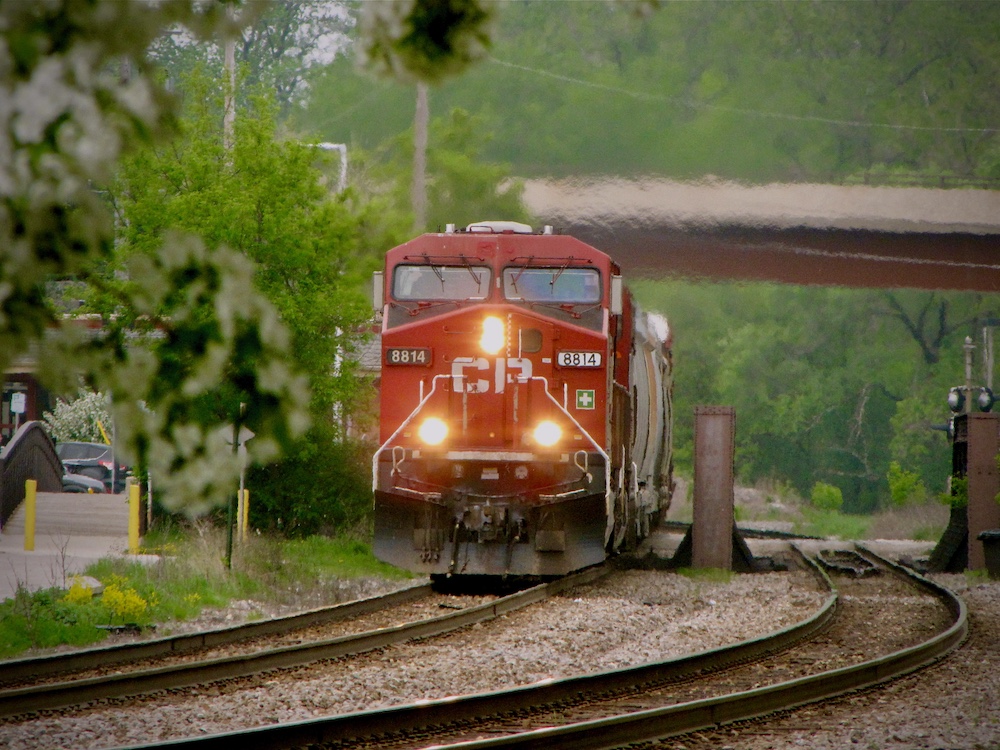
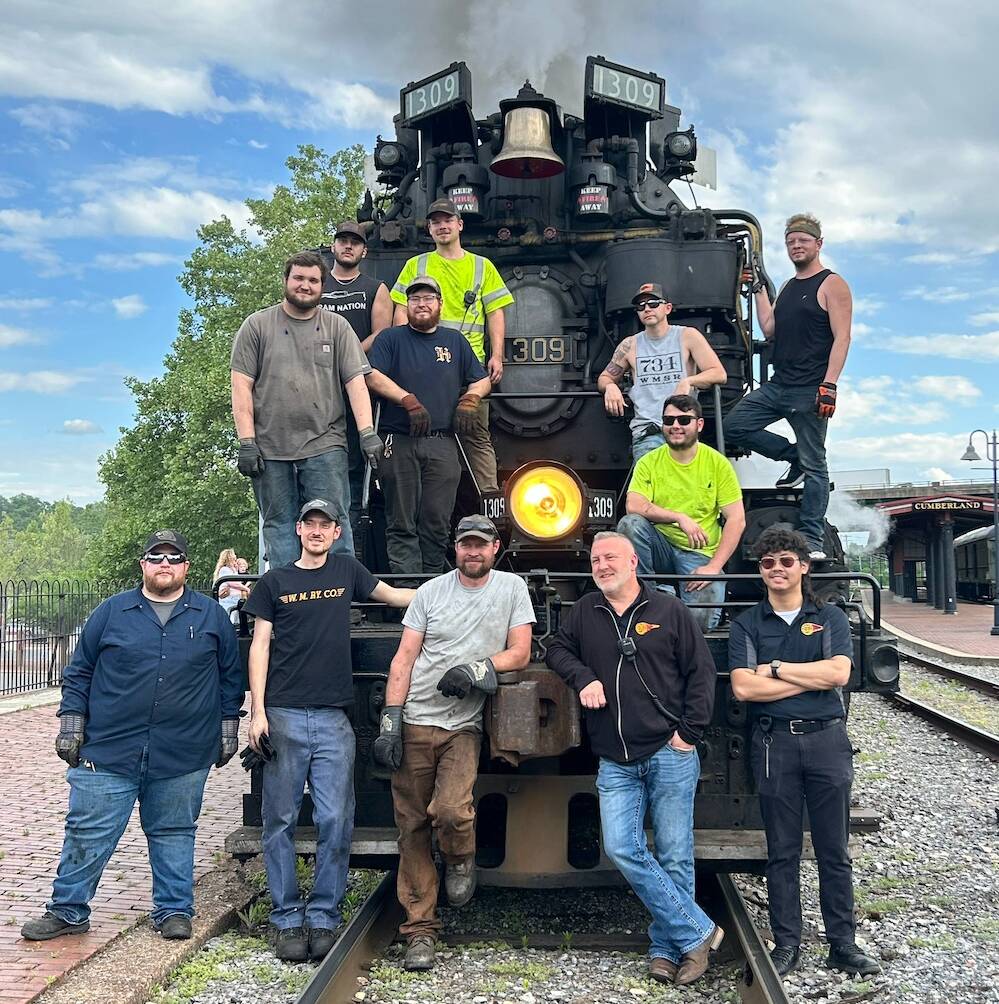
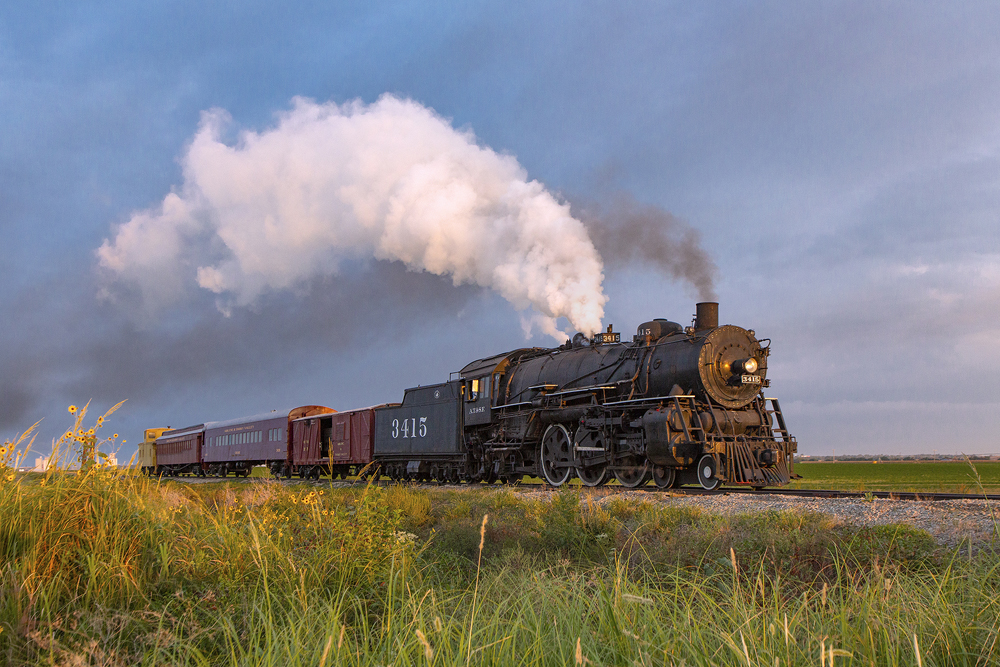




Will VIA tag along with a new LD order. The Canadian is perilously close to being cancelled due to its very old equipment.
Some people ride trains and never take the plane, some people only fly and never take a train even for local trips. Some people never even ride on a bus but only drive and use a car for everything. Do we discontinue certain modes of transportation because some people ride this only or ride that only ? By no means.
This is a diverse nation with so many people doing and going by different means of travel There is room enough and business to support and utilize all forms transportation whether it is by air, rail bus, car or ship. As I have always said this country needs all forms of transportation . A nation that just depends on one or two forms of travel is going to encounter chaos and confusion and shutdowns when that one form of travel grinds to a halt. Just look at the mess that occured over the Christmas holiday with the airline and especially the Southwest Airline meltdown. If there was decent and dependable rail travel or even intercity bus service, travelerswould have gladly switched their travel plans to use either train or bus to get where they needed to go. Maybe it is not the fastest way to get somewhere but at least you are mvoing and getting somewhere and not wasting time sitting in an airport waitng for a flight or plane that isn’t taking off.
Joseph C. Markfelder
This news release is important and hopeful. At last Amtrak is beginning the process to re-equip its National Network/long-haul trains.
BUT, what matters even more is that Amtrak management does not stall/drag out this process so that the BIL (Bi-partisan Infrastructure Law) funding runs out first. Five years (counting FY 2022) were forward funded–with total rail $ set at $66 Billion. Amtrak has both targeted funds for new LH equipment included and additional grants for which it can apply.
BUT, equally vital is that the 170 + national network cars now in storage be returned to service ASAP. The current CAP from DC to Chicago is running with one coach, a Cross Country Cafe diner-lounge and one sleeper (I kid you not). The TEXAS EAGLE is down to the same consist except for the addition of one extra coach.
This is wildly unacceptable.
Try booking a seat on the CAP to see the impact. Coach in particular is now typically sold-out–or if offered sold only at the highest fare bracket. Yet with only 60 seats available per trip the sold-out CAP will none the less show a huge ridership drop–better than 50% is almost guaranteed from pre-COVID levels. Amtrak seems in no way concerned.
Pre-pandemic this train always carried two (and often three) coaches, a full diner, Superliner lounge cafe, two sleepers and sometimes a transition dorm/sleeper. The present three car (only two revenue-generating) stump is incapable of showing positive ridership as it fails to rate any extra cars even when consistently full. Bob Johnston brilliantly dissected this in an earlier post.
Amtrak has parked dozens of serviceable Superliners to avoid the expense of their required four-year COTS brake overhauls/tests. Further coaches and even sleepers are being dragged empty to satisfy the absurd Axel-count requirement of the Canadian National on the former IC mainline.
As a further example. I support the Amtrak seasonal Ski Train from Denver to Winter Park (indeed I learned to ski while riding its Rio Grande Ski Train predecessor in the 1960s/70s), but perhaps this year Amtrak could have sent an Amfleet consist to provide the service. As it is the 2021 train had 8 coaches. This yer it’s four. Do we see a pattern here?
So I’m thrilled to see this initial feeler for new long-haul cars. But note this is NOT a true RFP. Rather it’s a “are you sort of interested” feeler–to be followed by a true RFP perhaps later this year. This is of course better than nothing–
BUT———
The double decker concept for long distance passenger trains is no longer valid! There’s simply too many travelers that are overweight, frail, and needing easy access to restroom facilities! Whatever they come up with, we need it fast! Amtrak is way behind the 8 ball on replacing it’s long distance fleet. And please, no trendy fixed consist train sets!
Go back to to your desk, there’s nothing wrong with the Superliner concept for future long distance trains at all, and it’s actually the best option for all Western trains with single level for Eastern long distance. The problem is not them being hi-level, but the layout and utilization factors.
I have watched some YouTube videos on Finnish bilevel sleeping cars. I understand that watching a video is not the same as riding but they do look very nice. At the very least they would be up to cold weather.
Articles like this draw the right wing pundits like bees to honey with their unsubstantiated Fox news “facts” & their attitude of “If I don’t use it we don’t need it” BUT! “If I use it I want everyone to help pay for it”. If the 1% stats were correct it would also apply to state supported corridors & the NEC. This is primarily due to the fact that the Govt never invested in psgr rail as it did the politically connected Hwys & aviation which were & still do make some people rich. Passenger car technology froze in time due to this lack of investment (over
30 yrs since the Superliner II) leaving us with the current vendors who are starting from scratch & as a result charge high prices & slow production. The bulk of the Infrastructure Bill which is increasing the deficit is going to Hwys if you had paid your fair share considering inflation at the pump for your joyriding & road trips you could still point your finger at transit & psg rail users as deadbeats but as it stands now you can _______.
Well put Galen!!
We have discussed using cars similar to the Rocky Mountaineer Ultradomes on other sites. They would certainly be the most efficient car possible, equivalent to stacking two Viewliners together, and would offer the most exciting design possibilities overall. But others have mentioned that they cannot pass through Chicago at least at this time. Don’t know if clearances can be raised or tracks lowered in Chicago if that is the case.
Clearances in Chicago would be costly to change. The platform areas are 100% concrete with the rails fastened to the concrete. I can’t even imagine the millions it would take to lower the tracks. Not a simple case of undercutting.
OBB’s new ‘Nightjet’ overnight trainsets from Siemens should just be duplicated, they are based on the same passenger coach design that Amtrak’s new Siemens trainsets are based on.
I have a very simple solution to this:
Alstom bought Bombardier in 2021. Bombardier, in turn, bought all of Budd’s railcar designs in 1987.
Couldn’t Alstom just take those old Budd designs and update them for modern standards?
The problem with that is no current manufacturer knows how to do the shot-welding method that Budd used to build their cars, that’s why the Nippon Sharyo cars had issues(besides failing the 800,000 lb stress test).
Amtrak should only replace its current long distance roster with single-level passenger cars which are adaptable to both low and high level station platforms. The single-level cars are not limited by height restrictions of the East and low clearances elsewhere.
Manufacturers should be left to their expertise of designing and carbuilding. Amtrak does not have the expertise.
Siemens Mobility returned glamour to the exterior design on the rails with full skirting on Brightline trains and locomotives with sleek noses. Those features could be applied to the next generation of long distance passenger trains.
The problem begins with Amtrak’s corporate management and Board, as both levels lack the requisite background and experience to comprehend the concept of future rail travel and how to serve it. Corporate management migrated from the airlines or Capitol Hill; nobody on the Board has a CV to provide the requisite stewardship to identify the customer experience.
As sleeper trains become the rave in Europe, the problem Amtrak faces is how crippled its leadership is to think outside the box. For example, instead of merely building equipment to replace the consists of current LD trains, why the lack of vision to not include equipment to support seasonal services-winter skiing and Florida; summer national parks? Why does Amtrak’s know-it-all leadership deliberately ignore what Pullman and the railroads did best, e.g., to utilize the same consist in winter as Seaboard’s “Orange Blossom Special;” in summer as New Haven/Maine Central “Bar Harbor Express?” As well, instead of parking over the summer surplus “Auto Train” equipment in Sanford, FL, where are the marketing gurus not to appreciate developing an “Auto Train” Denver/Colorado Springs overnight from Chicago during summer?
Instead, Amtrak is condemned to strictly adhere to the repetitive compulsion to error in its approach by people just punching a time clock in their offices, lacking the fervor for rail that Jim McClellan unabashedly evidenced.
Another insightful post by Mr. Singer. Thank you, sir. You hit it right every time.
Gardner as been at Amtrak for decades, he may not have come up through the operating ranks, but he knows Amtrak. He’s probably the last person there with any institutional knowledge.
Gardner is a glorified congressional aide who only knows the NEC. Just because he’s been there for awhile doesn’t mean he has the knowledge needed.
I agree Amtrak finds it nearly impossible to think outside the box. I’ve always wondered about the potential of an Auto Train from Chicagoland to California with a stop in the Denver. Get it started as a tri-weekly train initially. It wouldn’t be difficult to do. The train at Denver can be loaded and ready to go before arrival of the train. Denver cars in both directions in the middle of the train.
It is not clear that current ADA requirements, complete accessibility & elevators, are compatible with new bilevel cars.
Brightline buys new equipment. Goes almost directly into service.
VIA buys the same. Quickly into service.
Amtrak buys the same. Still “problems”.
Hmmmm.
The best outcome for the long-disance trains would be to discontinue them. They carry less than one percent of America’s intercity travelers. Meanwhile, they have been a constant drain on Amtrak’s finances. Well, that is not exactly true. Taxpayers should be substituted for Amtrak.
If getting ride of the long-distance trains is politically unacceptable, then replacement equipment should be restricted to business class cars, coaches, and lounge cars.
Instead of room cars, which are expensive to build, maintain, and staff, overnight trains should be equipped with business class cars with sleeping pods similar to those found on overseas flights. Instead of a traditional diner, they should have a car similar to the Sightseer Lounge car. It could offer light meals that would meet the needs of most long-distance riders.
In addiion, if a station is only served by one train a day, it does not need to be staffed. Most people today have a computer or smart phone; they can book their travel online. And the train conductors could help them with their luggage.
It is time to move into the 21st century. Running long-distance trains like this is the 1950s makes no economic sense.
Mr. Smith, the once a day trains is exactly the problem. It’s exactly why “they carry less than 1% of America’s intercity travelers”. Take for example the Lake Shore. That this train on this route has never grown into, at the very least, separate BOS-CHI and NY-CHI trains on complimentary schedules with the Boston train having a NY connection and the NY train a Boston connection, both at Albany-Rensselaer, is an absolute disgrace. And much of the undermining of these trains, at least back when Amtrak was running reliable eq, was “freight train interference”. The freight railroads don’t want more Amtrak train frequencies account track capacity issues. But succeeding administrations in DC were never able and willing to tackle the issue of the lack of mainline track capacity and operational flexibility. Because the politicians don’t ride. We have never had officials, elected and appointed in the federal government that understand railroads and how they operate. So they never brought the Amtrak and the freight railroads together to see what can be done to make the former’s trains operate on time along with a win for the freight railroad hosts. So you have self-defeating situation that also effects all the Amtraks outside the NEC, not just the LDs. The bottom line is the politicians at state and federal levels, since 1971, have never been serious about “making the trains worth traveling again”. And that’s why we’re are where we are today.
PAUL — I see your point. I very wealthy or very important person might pay $8,700 on way for an airline sleeping pod say from New York to Johannesburg or from London to Singapore, but they share a toilet and a sink down the aisle with other passengers. Amtrak could go to sleeping pods and common toilets, rather than rooms.
They make up a lot more than 1% of ridership. But ridership isn’t the metric transportation companies care about, it’s revenue passenger miles. And the long distance trains easily beat the other two business units. They are clearly the best performing part of Amtrak. It’s important to remember that All trains make money, just not always for Amtrak. Their contribution to economic output in their markets far surpasses any cost. We should be expanding the intercity long haul trains and adding more revenue generating options not cutting them.
Not everyone rides the full distance on long-distance trains. You’re forgetting these trains make stops that passengers get on and off from to another destination which may not be the full length either. Not all these stops are conveniently close to an airport either.
So who is the problem here in passenger design? The makers or Amtrak?
Seems like when Amtrak gets involved it doubles or triple the lead times. Why?
Irrational requirements, changing requirements or a NIH?